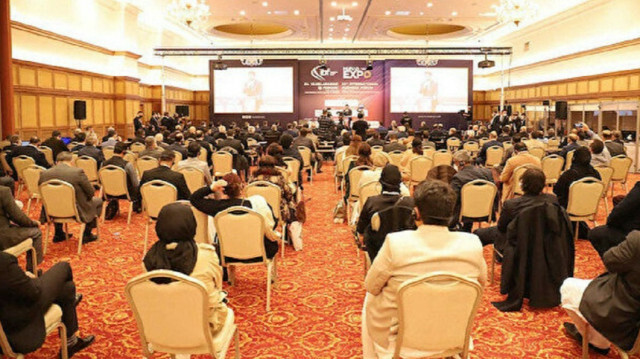Food consumption in the UAE has increased by 12% while the food retail industry expanded at 20.6%
Because of its arid climate and paucity of arable land, the UAE relies heavily on imports for its basic commodities and other food.
According to a report by Alpen Capital, contribution of agriculture was only 0.9 per cent of the UAE’s GDP.
“In the UK, 24 per cent of the land is available for agriculture while in the UAE it is only 1 per cent. Even where land is available, the GCC countries face severe water shortages,” said Dr Ashraf Mahate, head of export market intelligence at Dubai Exports.
In recent years, the UAE has seen a steady rise in food imports. Food consumption in the UAE has been growing at the rate of 12 per cent per year and, within this, the demand for food staples has increased by 30 per cent, according to the Ministry of Economy.
One of the main reasons for the increasing demand is the UAE’s steadily growing population. According to Alpen Capital’s June 2011 GCC food sector report, the food retail industry in the UAE expanded at the rate of 20.6 per cent between 2005 and 2009 and was valued at $6.1 billion (Dh22.38 billion) in 2009. Within the food retail sub-sector, hypermarkets, supermarkets and discount stores accounted for 82.9 per cent of the sales according to Datamonitor.
Retail food outlet sales are made up of 75 to 80 per cent of imported consumer-ready products and only 20 to 25 per cent of locally processed foods, according to the Ras Al Khaimah Investment Authority (RAKIA).
Tourism industry
Another reason for the growth in demand is the growing tourism industry. In 2010, the UAE was visited by approximately 11.6 million tourists. And growing flight networks and local airlines have also boosted the demand coming from the in-flight catering industry. Currently, more than 120 airlines operate to and from Dubai. Officials reported Dubai International Airport handled 46.3 million passengers during 2010, Alpen Capital said in its report.
Another factor driving growth is the UAE’s prominent position as a re-export hub. The UAE re-exports nearly 50 per cent of imported food products to other GCC countries as well as Russia, India, Pakistan and East Africa.
As the demand increases, so will import volumes. According to the Economist Intelligence Unit, in 2010, the UAE’s imports totalled $3.6 billion. This figure is estimated to rise to $5.5 billion in 2015 and $8.4 billion in 2020.
While soaring food prices and supply shortages are not as high or severe as they were in February 2008, it still remains an area of concern for the UAE. The World Bank Food price index shows that there has been a 25 per cent increase in prices between last September and this year. According to the FAO’s Food Price Index, prices of all commodity groups rose in January 2012. Oils increased the most at 3 per cent, followed closely by cereals up 2.3 per cent and sugar 2.3 per cent.
“The issue of the global climate change as a result of an increase in carbon dioxide and other greenhouse gases have a direct impact on food production through extreme weather while in other cases an indirect impact from floods, severity of pests and diseases, infections and so on,” Dr Mahate said.
Land banks
During June 2011, the government announced a scheme in partnership with retailers to offer basic food under 400 categories at lower prices. The scheme was launched for six months throughout 70 outlets involving retailers such as Carrefour, LuLu and Spinney’s.
In an effort to improve food security, the government has also been investing in agriculture projects abroad, especially in Vietnam, Cambodia, Egypt, Pakistan, Romania, Sudan and the Americas, to secure food supplies and safeguard against market fluctuations. The Abu Dhabi Fund for Development recently announced plans to invest in 30,000 hectares of land in Sudan. It will use the land to produce fodder, wheat, corn and potatoes, according to Alpen Capital.
“However, the purchase of land banks is now viewed with suspicion by some of the recipient countries and the strategy is limited at best. More-over, the purchase of land banks itself does not guarantee a supply of future food. The simple reason for this is that a country at any point in time can impose an export ban,” Dr Mahate said.
Another strategy that has been used by GCC countries is to build reserves of food in order to stabilise food prices and ensure adequate food supplies.
“Food stockpiles require effective management as well as appropriate storage facilities. In the case of the GCC, this is of particular importance due to its harsh climate. Also, the shortage facilities themselves add to the cost of the food supply,” Dr Mahate said.
Rice: Origin of the staple
According to the UN Food and Agriculture Organisation, 80 per cent of the world’s rice production comes from seven countries. Asia is the biggest producer, accounting for 90 per cent of the world’s production and consumption. China and India, which account for more than one-third of the global population, supply more than half of the world’s rice. Brazil is the most important non-Asian producer, followed by the United States. Italy ranks first in Europe.
According to Dubai Exports, in 2010, the top five markets UAE imported rice from are: India ($643,081,000), Pakistan ($314,791,000), Thailand ($59,660,000), US ($7,933,000), and Sri Lanka ($3,667,000).
Import volume
Total rice imports to the UAE in 2010 were valued at $1.3 billion.
Re-export
The UAE is one of the biggest re-exporters of rice. Rice traded through the UAE (re-exports), totalled $520.8 million 2010, representing around 90 per cent of the world’s re-exports.
According to Dubai Exports, 85.7 per cent of the UAE’s re-exported rice goes to Iran.
The other markets include Oman, Nigeria, Zimbabwe, US, Mozambique, Madagascar, Sri Lanka, South Africa, Zambia, Uganda, Rwanda, Mauritania, and Ethiopia (between 4 per cent and 0.1 per cent)
Wheat: Origin of staple
According to Dubai Exports, in 2010, the top five markets the UAE imported its wheat from were Iran ($67,378,000), Australia ($64,833,000), Canada ($48,111,000), Germany ($44,081,000), Russia ($16,725,000)
Import volume
According to the Arab Agriculture Statistics Yearbook 2009, the UAE’s dependency on cereals was 94 per cent in 2007. According to Dubai Exports, in 2009, the UAE imported $3.1 million worth of wheat.
Edible oils: Origin of the staple
Palm oil from Malaysia made up 72 per cent of imports in 2007.
Other sources of palm oil include Indonesia and India.
Import volume
In 2006 UAE imported 458,730 tonnes of edible oils.
According to Dubai Exports, the total value of imported oil and fats in 2009 was Dh1.5 billion.
The FAO Oils/Fats Price Index remains high in historical terms due to high import demand for palm and soy oil, combined with a seasonal decline in palm oil production and the prospect of below-average export prospects of soy oil.
Re-export
Although its population is just one-sixth that of Saudi Arabia, the UAE buys as much vegetable oil as the GCC’s largest country because much of what it imports is re-exported. About three-quarters of UAE imports, or 337,785 tonnes, were exported or re-exported to neighbouring regions in 2006.
According to Dubai Exports, the total value of oil and fats re-exports in 2009 was Dh202 million. The top exported products in order of value were soya bean, palm oil, fixed vegetable fats, maize and sunflower oil. Key markets are Iran Turkey and Saudi Arabia. Five factories in Dubai produce edible oil and fats and similar products.
Pulses: The origin of the staple
According to Dubai Exports, in 2010, the top five markets the UAE imported pulses from were Canada ($82,516,000), Australia ($33,734,000), China ($24,596,000), Ethiopia ($14,008,000), and India ($13,228,000).
Import volume
According to Dubai Exports, the import value in 2009 was $201,424,000. Global value was $7.4 billion.
According to the Arab Agriculture Statistics Yearbook 2009, the UAE’s dependency on imported pulses in 2007 was 94 per cent.
Sugar: The origin of the staple
According to Dubai Exports, in 2010, the top five markets the UAE imported its sugar from were Brazil ($636,964,000), India ($31,584,000), Germany ($31,466,000), Belgium ($29,844,000) and Thaila nd ($8,836,000).
The UAE’s Al Khaleej, the world’s largest sugar refinery, imports almost all of its raw sugar from Brazil through long-term supply contacts.
Import volume:
In 2009, the UAE imported $686,317,000 worth of sugar. Global import values were $21.3 billion.



